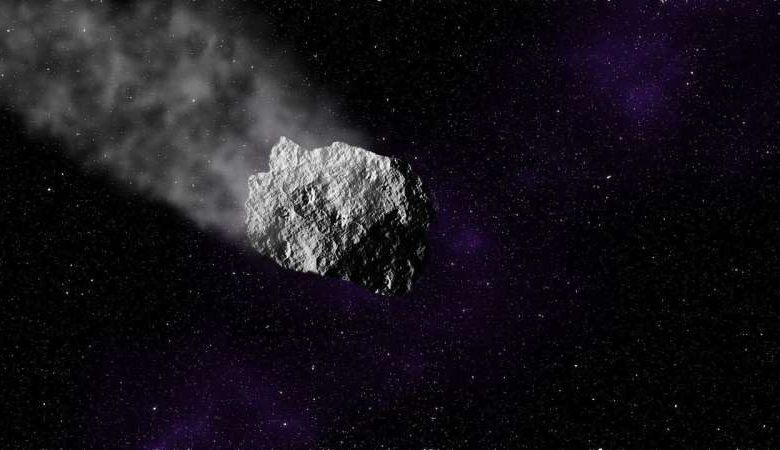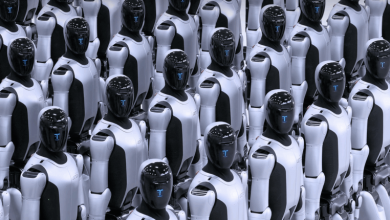What are near-Earth asteroids made of?

In the vast expanse of space, an estimated 1 million near-Earth objects (NEOs), also known as near-Earth asteroids, are constantly orbiting close to our planet.
Every night, astronomers track NEOs and discover new ones, noting how fast they’re traveling, how large they are and where they’re headed. Because of their work, world leaders could get advance warning if one of these celestial objects is on a collision course with Earth, helping them prepare for calamity.
But there’s one thing astronomers don’t yet know, something that could be key to defending Earth from dangerous collisions: how to quickly identify what an NEO is made of.
That’s where David Trilling and Remington Cantelas come in.
Trilling, a professor of astronomy and planetary science at NAU, and Cantelas, a doctoral student in astronomy at NAU, will spend the next three years analyzing the makeup of 1,000 NEOs using cutting-edge telescope technology at observatories in Hawaii and Australia. Their work will provide one of the largest surveys of NEO compositions to date, helping astronomers defend our planet more effectively and helping scientists better understand the diverse makeup of the universe.
“When an asteroid is coming our way, we need to know as much as we can about it before it hits,” Trilling said. “We already have the tools to find out where it might impact. But what we don’t know is, is it a rock, is it a loose pile of gravel or is it a solid block of iron?
“Without that information, we don’t know whether to launch a missile to change its trajectory or whether to let it be. We don’t know whether it’s going to cause mass destruction or a nice little meteor shower.”
Information on the material makeup of NEOs is lacking because, until very recently, analyzing them was a painfully slow process.
“The traditional way is called spectroscopy, and it’s very comprehensive and very slow,” Trilling said. “You come up with the composition of each asteroid by looking for light absorption features and matching them with the light absorption features of different minerals. With the spectroscopy method, you can observe a few dozen asteroids in a year.”
Cantelas, who is leading the research project, will use a new camera called MuSCAT—short for Multicolor Simultaneous Camera for studying Atmospheres of Transiting exoplanets—to move at a comparatively breakneck speed, turning out more than 300 asteroid observations in the span of a year. While this approach gives Cantelas the benefit of speed, it does sacrifice some detail.
“Instead of splitting the light into hundreds of wavelengths, we split the light into four wavelengths,” Trilling said. “We go 100 times faster, but we gather 100 times less information. We’ll only be able to tell you if the asteroid is iron, if it’s a rock or if it’s something else entirely.”
But by gathering a large volume of information, the pair of researchers will give astronomers a broad understanding of the different types of asteroids that are orbiting near Earth—something they haven’t had before.
“Someday, when an asteroid is coming toward Earth, we’ll have a catalog that says, ‘It’s this percent likely it’s this material and that percent likely it’s that material,'” Trilling said. “That’s going to be very valuable.”
Planetary defense isn’t the only thing driving the pair’s work. By combining information about an asteroid’s orbit with information about the asteroid’s material composition, Trilling said, astronomers can develop a richer understanding of the solar system and its material diversity.
“What’s cool about NEOs is they were all formed somewhere else in the solar system before they came near Earth’s orbit,” he said. “If you know what they’re made of, and you know how to track their paths of orbit, you could potentially map out the entire solar system without leaving Earth.”
The pair’s work is already underway. Last year, Trilling said, Cantelas led a pilot project observing a random sample of 10 asteroids using MuSCAT technology. She and Trilling expected to find that most or all of the asteroids were made of the most common types of rocky material in the solar system. Instead, they got a surprise.
“The compositions are all over the map,” Trilling said. “Half of them are what we expected, but the other half are really bizarre compositions we never thought we’d find in this survey, and their mineral signatures are really pronounced. What if the solar system has more ‘oddballs’ than we thought? Where did they come from? How did they get here? There will be lots of mysteries to solve.”





